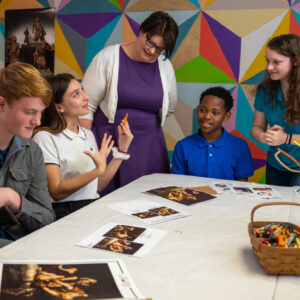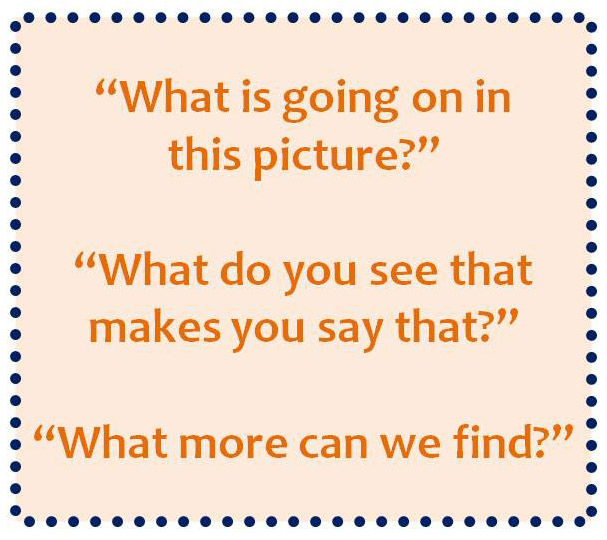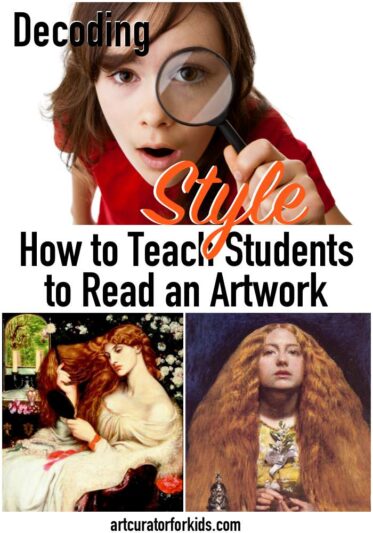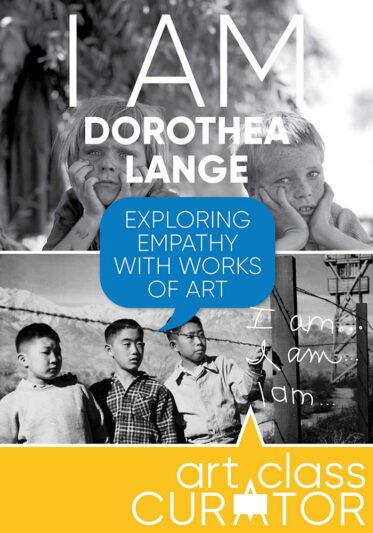One of the best ways for a student to connect with art is through narrative or story. Really, it’s not just appropriate for just students–we all connect through narrative. Narrative is how all of us see the world and how we connect with each other. We put together stories in our heads for situations in our lives. We try to fill in the blanks. And when we first see a work of art for the first time, we often go straight to narrative (if the strong emotions in the work don’t grab us first!).
The benefits of including narrative writing in your curriculum are many: from emotional expression to social and cultural awareness and understanding to developing creativity. Hearing others’ stories and telling your own story are powerful.
Art is a natural fit for narrative because much art tells a story, but that story is up for interpretation from the viewer. The story and the art itself changes depending on who is looking at it. The artist leaves us clues and descriptors and emotions, and we are left to put the pieces together. It is exciting and creative and challenging.
I say it is challenging, but really our kids don’t find it as daunting as we do as adults. They are primed for story creating, and all we need to do is help guide them through the process. The rest of this post gives you a step by step guide to exploring narrative through art.
Analyze the Painting: Visual Thinking Strategies
This human focus on the narrative is what led Abigail Housen and Philip Yenawine to develop Visual Thinking Strategies (or VTS). I’ve briefly mentioned them before on the blog here. VTS was created in response to Housen’s stage theory of Aesthetic Development (source). Don’t click away; I won’t bore you with the details, but she discovered that there are five stages of how people interact with artwork. In the first stage or Accountive stage, viewers of art focus on narrative.
Accountive viewers are storytellers. Using their senses, memories, and personal associations, they make concrete observations about a work of art that are woven into a narrative. Here, judgments are based on what is known and what is liked. Emotions color viewers’ comments, as they seem to enter the work of art and become part of its unfolding narrative. (source)
So, what is VTS?
With VTS, you use three questions only: “What’s going on in this picture?”, “What do you see that makes you say that?”, and “What more can you find?” That’s it! You basically just keep poking and prodding the student for more information and connecting his or her ideas together. Starting with that key question, “What’s going on?” will spark a lot of ideas and stories in the student. The question hints at narrative but doesn’t limit the student’s response. I was really skeptical of this strategy when we discussed it in grad school, but honestly, I find it to be a very effective way of talking about art with students.
Develop the Story
While I think VTS is useful and works very well, sometimes you want to go deeper into the interpretation of the work. Remember, this is YOUR or your student’s story. Don’t look up the “right answer.” Your interpretation is just as correct as whatever you might find to read about the work.
- The first step of interpreting narrative in art is fully exploring the painting–taking an inventory of all of the things, emotions, places, actions, and people present in the work. The artist makes a lot of choices that impact the story, so make sure you and your student have discovered and analyzed these choices fully.
- Next, you can work together or alone through writing to figure out what happened before the moment depicted in the painting. Figure out the motives and personalities of the characters. What were they doing in painting, and what did they do to get to that point? What were they reacting to? Why were they feeling those emotions? Create a back story.
- After developing the back story and present story, create what will happen next. Back up ideas that you have with clues from the painting, but feel free to get creative.
- Outline the story and flesh out the details. Study parts of a story to make sure you have all the elements of a good narrative and to connect with your language arts curriculum.
Document the Story and Create
Once you have figured out your story, take it further with one or more of these activities.
- Draw, paint, or storyboard the story. Create new paintings of moments in the story before or after the painting in question. Or, create a storyboard with all of the key points illustrated as if preparing for an animated movie on a notecard or a template printed from online.
- Write it out. Depending on the age and ability of the student, write out the story. You could have the student write a short story or a screenplay. If your student is unable to write yet, take a video of him or her telling the story out loud or write it down for her.
- Act it out. Have students work with other students to put on a play or make a video. Make costumes and props, develop the script, and practice the emotions.
- Create a tableau vivant. If you have multiple students, create a series of tableaux vivants, or living pictures. Have them create the story using their bodies with props if you’d like. This is basically like a freeze-frame. You could have them do one point of the story as a freeze-frame which morphs into another freeze frame for the middle of the story which then morphs into the end of the story. Snap pictures of each tableau to document the learning experience. It may sound like a silly activity, but the students I have done this with always get a good laugh out of it and it helps them make a deeper connection with the artwork.
Your Turn!
Let’s try it out. Take a close look at this artwork.
Develop the story based on clues from the painting, and tell me your story in the comments. 🙂

Get the Full Lesson!
This Lesson is in The Curated Connections Library!
Find the full lesson from this post along with hundreds of other art teaching resources and trainings in the Curated Connections Library. Click here for more information about how to join or enter your email below for a free SPARKworks lesson from the membership!
This article was originally published on June 18, 2014.








Thanks for this post. It brings a whole new dimension to picture study.
You’re welcome! 🙂
Just a note to thank you for this lovely post. I used your tableaux vivant idea while presenting Caravaggio’s The Cardsharps to my 4th, 5th and 6th grade art classes. It was fantastic and we had such a great time. Thanks for the great idea.
Awesome! I’m so happy it worked out for you. It’s always fun (with ANY age!). 🙂
Hello dear friendmrs Cindy. I enjoyed your article. I am a researcher and art instructor who has just met your site.
thank you so much.
I am speaking to a group of teachers about using VTS with narrative writing. I would love to share a PDF of this post with the group. I plan to send them to your website but many still prefer paper copies. Is there a printable version?
HI Rosemary, I sent you an email. Please check your inbox. Amy